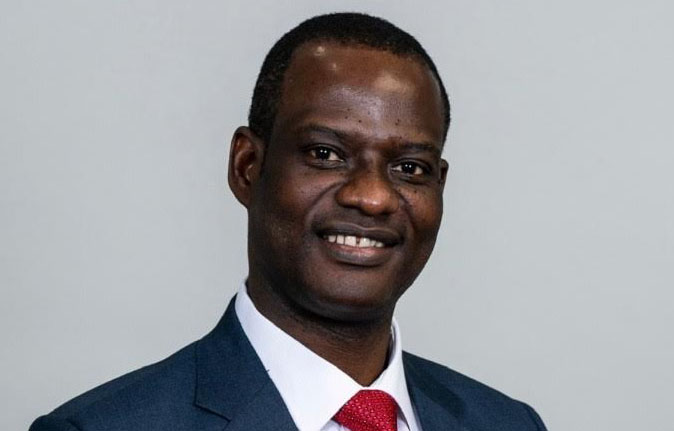NAICOM’s directive on directors’ tenure may hamper insurance firms

Following a directive in the 2009 Corporate Governance Code of the National Insurance Commission (NAICOM) mandating executive directors and non-executive directors, who have stayed over a stipulated period of years, precisely, nine years on the board of insurance firms, to exit the companies, this has led to mass exit of executive and non-executive directors on some insurers’ boards.
There are strong indications that this development could threaten and destabilise the operations of the affected firms.
Already, most insurance companies that have so far done their 2015 Annual General Meeting (AGMs) announced to their respective shareholders that they were affected by this development.
This directive, Business247 News Online learnt, has resulted in the compulsory retirement of several board members of underwriting firms, and in most cases, six to seven executive directors retire at once in each company.
Moreover, Business 247 News Online investigations revealed that more directors have gone and more will still go as well, while the picture is expected to become clearer by the time the remaining insurance companies conduct their 2015 AGM in a couple of weeks, where they will officially make the announcement to their respective shareholders.
Sovereign Trust Insurance Plc, Staco Insurance, Consolidated Hallmark Plc, among others, are said to be affected by this directive.
Insider source equally disclosed that some managing directors are already preparing their exit, with few of them already compulsorily retired from the insurance firms they represent.
Briefing shareholders at its 2015 AGM recently in Lagos, Mr. Dere Otubu, Immediate Past Chairman, Staco Insurance Plc, said: “During the first quarter of 2016, a significant number of non-executive directors (six), resigned their appointments in line with the 2009 NAICOM code of corporate governance. All resignations were effective 31st March, 2016 and appointments from 1st April, 2016.”
Also, five directors left the board of STI Plc and six directors left the board of Consolidated Hallmark Plc as they were affected by the same NAICOM directive.
Experts said this development could negatively affect the fortune of the concerned insurers, stating that a situation whereby seven directors had to leave a board of a company at the same time is not ideal for the growth of insurance industry.
Although, industry watchers expect the concerned firms to recover in the long run, they felt such mass exit could destabilise the companies in the first instance, as a new board might have a different idea, thus abandon the previous projects of the former board, therefore, calling for a serious successive plan in insurance industry, going forward.
Experts said it might take some time for these new set of directors to acclimatise, before getting their bearings right, which may slow down operations in the concerned firms.
Reacting to this development, the Chairman, Nigeria Insurers Association (NIA), Mr. Eddie Efekoha, said this development will not threaten the operations of insurance companies, adding that this will allow the companies to refocus and re-strategise for the future.
According to him, “It will only call for more refocus and reforms. It will bring in fresh blood into the insurance industry and will propel the sector into the path of growth and development.”
Meanwhile, Alhaji Mohammed Kari, Commissioner for Insurance, said the stipulation of maximum numbers of years to spend on a board, as contained in the industry’s corporate governance code, was meant to enhance high standards, ethics and professionalism in the operation of insurance companies in the country.
He added that a director disqualified by the 9-year rule may be reappointed to the same board after a cooling period of three years, noting that the code of corporate governance stipulates that there must be at least one executive director (ED), to be responsible for technical/operational matters and that the ED shall have the qualifications required in law of that of the chief executive officer.
On the meeting of that requirement, he stressed that companies may have other executives directors they wish up to the limit of the 40 per cent.
The code, especially, the 9-year maximum tenure limit, he said, applies to only insurance and reinsurance companies for now, noting that specific pronouncements would be issued in due course for insurance brokers and loss adjusters.
Earlier, shareholders of underwriting firms have charged insurers to henceforth adopt a successive plan in their respective companies such that most directors don’t have to retire at the same time on the board.
Mr. Nonah Awo, who spoke on behalf of insurance shareholders at the 21st Annual General Meeting of STI Plc, in Lagos, said if insurers have had a good succession plan in place, a situation whereby several directors would be put on compulsory retirement, as contained in the NAICOM’s regulation, would not have arisen.
“Insurance companies must start thinking of successive plan rather than waiting for the regulator to sack everyone,” he said.
Having this successive plan, he added, will enable the adopting companies to grow its investment, thereby, leading insurers to profitability. If this plan is adopted, he stressed that the shareholders, who have invested so much in these companies, should be able to get a good returns on their investments.
In the same vein, Adebayo Adeleke, Secretary, Independent Shareholders Association of Nigeria (ISAN) appealed to NAICOM to temper justice with mercy, especially, on its policy that led to the sack of executive directors on the board of most insurance firms.
“NAICOM needs to regulate the companies with fear rather than selfish interest. You cannot sack owners of a house from their homes,” he stated.







Comments are closed.